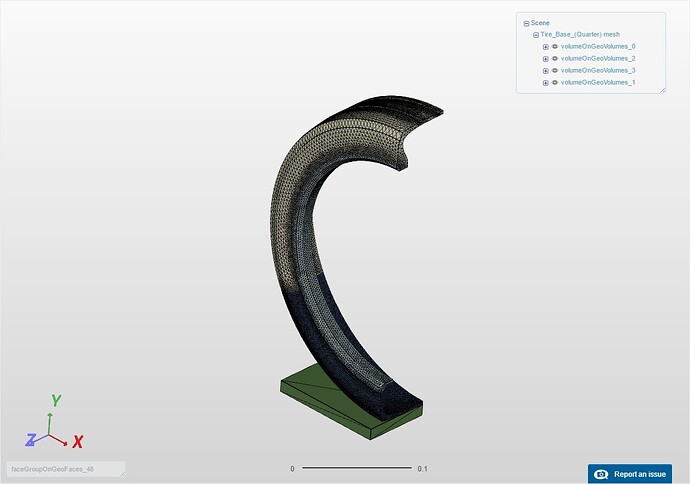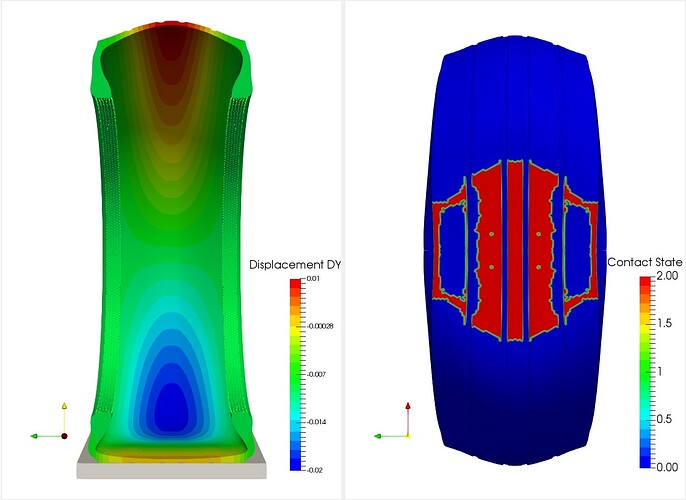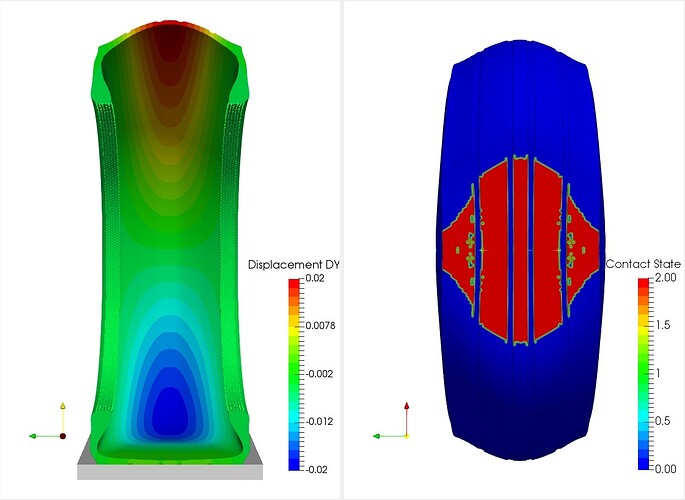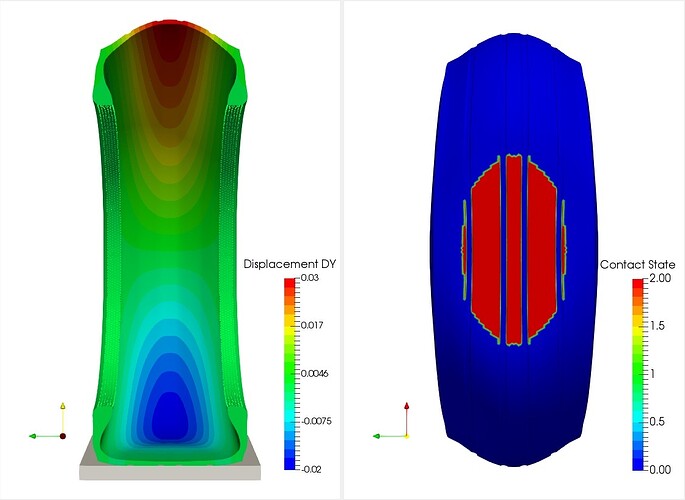Dear SimScalers,
in this weeks spotlight we will have a look at an awesome simulation of a tire deformation by our user @Qureshi .
1. Introduction
The purpose of this project was to demonstrate the deformation of a typical car tire, when it is subjected to different internal pressure loadings:
- 16 psi (under)
- 32 psi (ideal/recommended)
- 48 psi (over)
The mass of the car was assumed to be 1600 kg (midsize)
The following CAD Model was used:
Courtesy: Erkko Agge (GrabCAD)
2. Geometry
Format: STEP
In the first step, the geometry of the tire was simplified. Only one-forth of the portion was used due to symmetrical (pressure) loading. In this way the required computing power and time could be saved.
The remaining geometry contained 4 parts:
- Base
- Rim-Section
- Tire (Lower 1/3rd Section)
- Tire (Upper 2/rd Section)
3. Meshing
Type: Tet-Dominant
Base was meshed coarsest possible, since it was kept fixed and rigid i.e. no effect of loading whatsoever.
The tire was sectioned into two parts, since its surface closer to the base had to take naturally maximum impact (deformation). So, its lower 1/3rd part was meshed finer than its upper counterpart. This was the another way of cutting down the computing time.
4. Simulation:
Type: Static Analysis - Advanced
- the upper and lower part of tire,
- the rim and (both parts of) the tire.
- frictionless, between the lower part of the tire and the base.
- Planar symmetry (since only 1/4th of the model was used)
- Displacement restriction in X and Z directions, while Y was unconstrained.
Loading:
- Internal Pressure (110 kPa, 220 kPa and 330 kPa respectively for each simulation)
- Car’s Weight (~16 kN, assumed uniformly distributed), i.e 4 kN on each tire and 1 kN on our 1/4th model.
5. Results & Conclusion:
3 types of simulations were carried out, each with the different pressure (as explained in the introduction) and the deformation was as following:
(1). 16 psi - under (recommended) pressure:
In this case, the tire’s interal pressure was well below the recommended limit of ~32psi. The contact with the base in the center is okay, but on the left and right side the tire is bulged up. Poor grip results with the base.
(2). 32 psi - ideal/recommended pressure:
The pressure in the tire is on its recommended level. We can see that the contact in the center, left and right sides is quite uniform. This leads to a good grip with the base.
(3). 48 psi - over (recommended) pressure:
Here the contact on the left and right side is almost non-existent. Apart from dangers of tire explosion due to over pressure, the grip with base would be very poor in this case.
SimScale project:
To look at the simulation setup, please have a look at the project from @Qureshi :
To copy this project into your workspace, simply follow the instruction given in the picture below.






